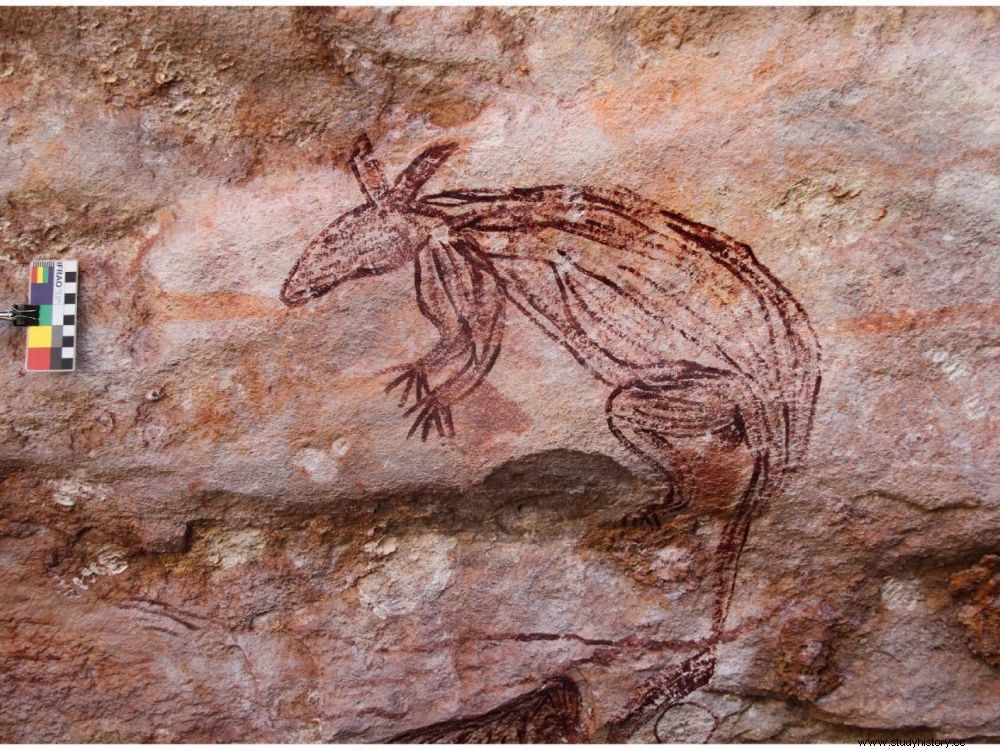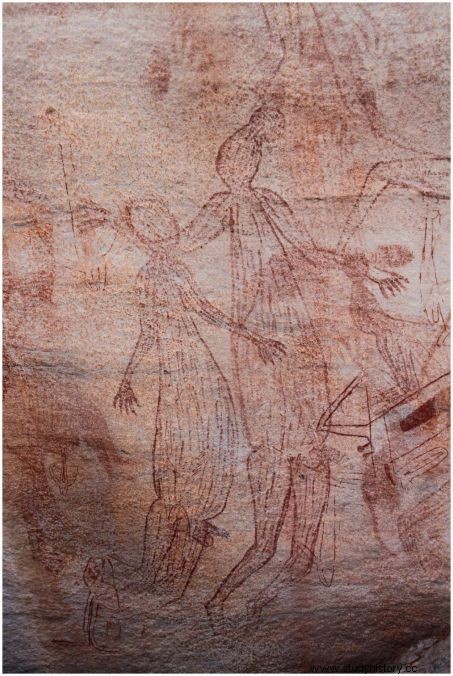In Arnhem Land, an Australian Aboriginal region, researchers have discovered previously unknown rock paintings that are between 6,000 and 9,400 years old.

A marsupial of the Macropodidae family.
Magnificent cave paintings, including representations of Macropodidae, a particular family of marsupials (including kangaroos, wallabies...) and a dugong, were described on October 1, 2020 in the journal Australian Archaeology .
Bilbis in Arnhem Land?
A team of Australian researchers has documented 572 previously unknown paintings discovered at 87 different sites in northeastern Arnhem Land, an Aboriginal region of Australia. These discoveries were made over ten years, from 2008 to 2018, and would be between 6000 and 9400 years old. Researchers have dubbed them the Maliwawa Figures . There are represented humans often more than 50 centimeters, even in real size and sometimes wearing headdresses. There are also many animals including Macropodidae and also another type of marsupial called bilbis. However, these animals are not known to have lived in Arnhem Land.
"Two of these animals are back-to-back and nearly identical in size. The third bilby-shaped depiction appears to have been made at a different time, and possibly by a different artist, as it is larger, a a longer muzzle “, remarks in a press release the Dr. Sally K. May, co-author of the study. It is also conceivable that these animals were at the time on this Aboriginal land or that an artist saw bilbis during traveled further south and then drew them in a shelter to "tell" this encounter with unknown creatures.
"It is also possible that the representations are agile wallabies, Northern Onychogales or Short-eared Petrogales (all called wallabies in English, editor's note), but all of these species have much shorter ears and snouts than the extant bilbis and creatures depicted at Awunbarna ", remarks Dr. Sally May. Archaeologists have also discovered a representation of dugong, the oldest known to date. This painting indicates that its author went to the coast. An excursion which nevertheless seems infrequent:reproductions marine animals are rare.

Two representations of animals back to back similar to bilbis. We notice their long muzzle which suggests that it is not a kind of wallaby as in the photo that illustrates this article. Credit: P. Hook
A testimony of beliefs

Great male representations. Credit: P. Hook
Scenes were also described. They seem to reflect a ceremonial activity. The many animal representations suggest that the relationship that the inhabitants of this region had with animals is at the heart of the representations brought to light. "Artists clearly communicate aspects of their cultural beliefs, emphasizing important animals and interactions between humans and other humans or animals ", remarks Professor Taçon, co-author of the study. The latter seem to watch and sometimes even participate in the ceremonies, witnesses of this privileged relationship illustrated thousands of years ago.
